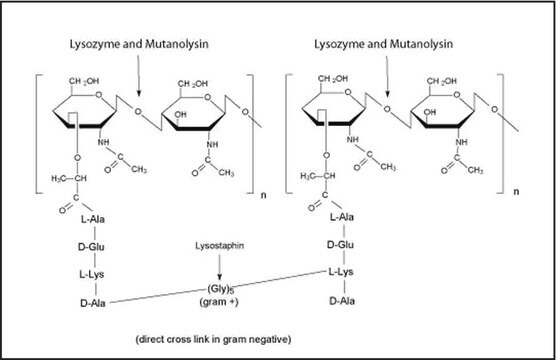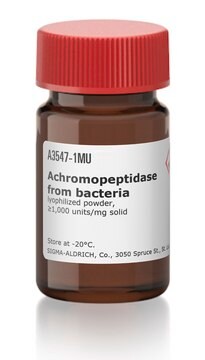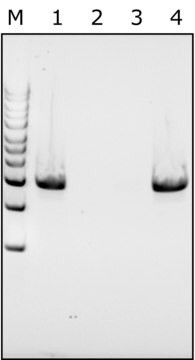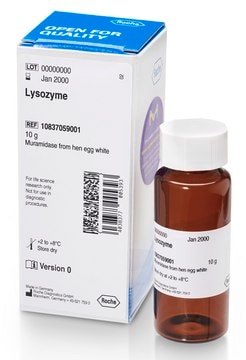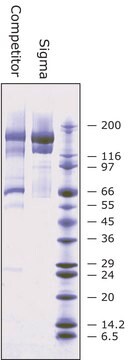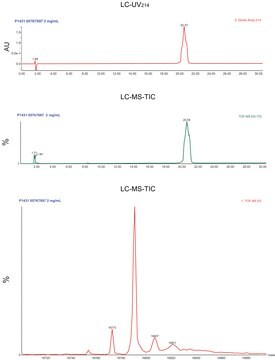Key Documents
L4402
Lysostaphin from Staphylococcus staphylolyticus
BioUltra, ≥97% (SDS-PAGE), Protein 40-60 % by biuret, ≥2,000 units/mg protein
Synonim(y):
Glycyl-glycine Endopeptidase
About This Item
Polecane produkty
pochodzenie biologiczne
bacterial (Staphylococcus sp.)
Poziom jakości
linia produktu
BioUltra
Próba
≥97% (SDS-PAGE)
Postać
lyophilized powder
aktywność właściwa
≥2,000 units/mg protein
masa cząsteczkowa
25 kDa
skład
Protein, 40-60% biuret
stężenie
40—60% protein
metody
cell based assay: suitable
przydatność
suitable for cell lysis
spektrum działania antybiotyku
Gram-positive bacteria
Zastosowanie
diagnostic assay manufacturing
Tryb działania
cell wall synthesis | interferes
temp. przechowywania
−20°C
Szukasz podobnych produktów? Odwiedź Przewodnik dotyczący porównywania produktów
Opis ogólny
Działania biochem./fizjol.
pH Optimum for activity: ~7.5
Definicja jednostki
Postać fizyczna
Uwaga dotycząca przygotowania
Hasło ostrzegawcze
Danger
Zwroty wskazujące rodzaj zagrożenia
Zwroty wskazujące środki ostrożności
Klasyfikacja zagrożeń
Resp. Sens. 1
Kod klasy składowania
11 - Combustible Solids
Klasa zagrożenia wodnego (WGK)
WGK 3
Temperatura zapłonu (°F)
Not applicable
Temperatura zapłonu (°C)
Not applicable
Środki ochrony indywidualnej
Eyeshields, Gloves, type N95 (US)
Certyfikaty analizy (CoA)
Poszukaj Certyfikaty analizy (CoA), wpisując numer partii/serii produktów. Numery serii i partii można znaleźć na etykiecie produktu po słowach „seria” lub „partia”.
Masz już ten produkt?
Dokumenty związane z niedawno zakupionymi produktami zostały zamieszczone w Bibliotece dokumentów.
Klienci oglądali również te produkty
Nasz zespół naukowców ma doświadczenie we wszystkich obszarach badań, w tym w naukach przyrodniczych, materiałoznawstwie, syntezie chemicznej, chromatografii, analityce i wielu innych dziedzinach.
Skontaktuj się z zespołem ds. pomocy technicznej


